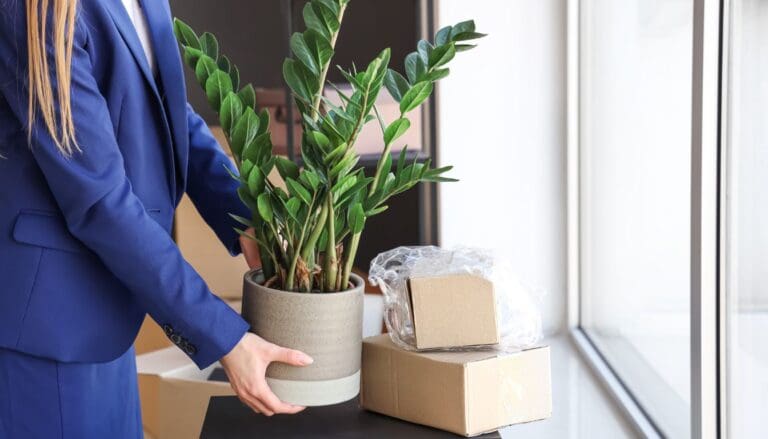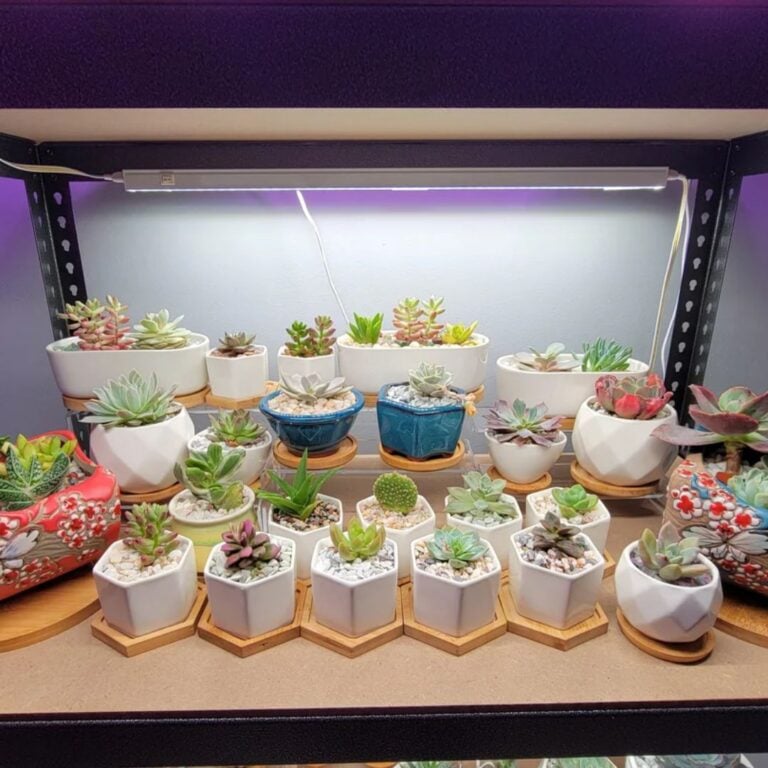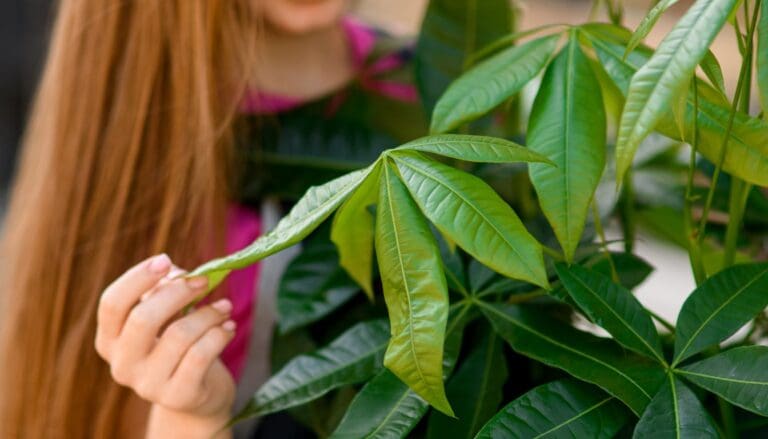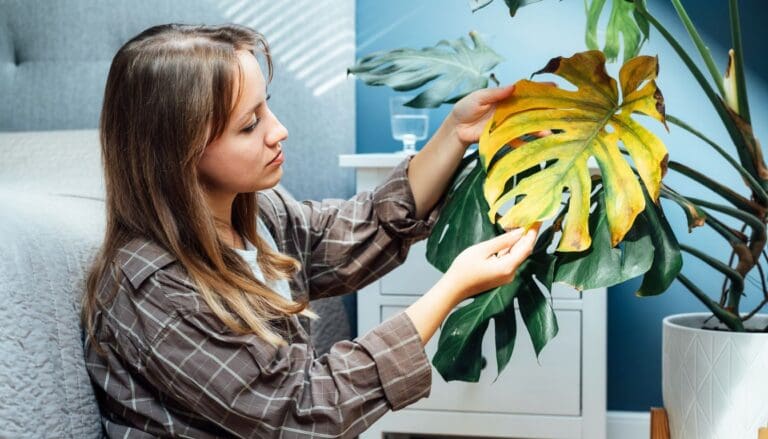4 Quick Fixes for Drooping Leaves in Cooler Months
When it gets cooler, I always notice my plant leaves start to droop more often.
It’s honestly a bit frustrating when I’m trying to keep everything looking lively.
Let me share a few quick ways to help drooping leaves perk up during colder months.
With just a few simple tweaks, I can usually give my plants the support they need until things warm up again.
Please note: Simplify Plants is reader-supported. As an Amazon Associate, I earn from qualifying purchases made by our readers with no extra cost added to you all! Some links in the post are affiliate links and I get a commission from purchases made through links in the post.
1) Increase indoor humidity with a humidifier
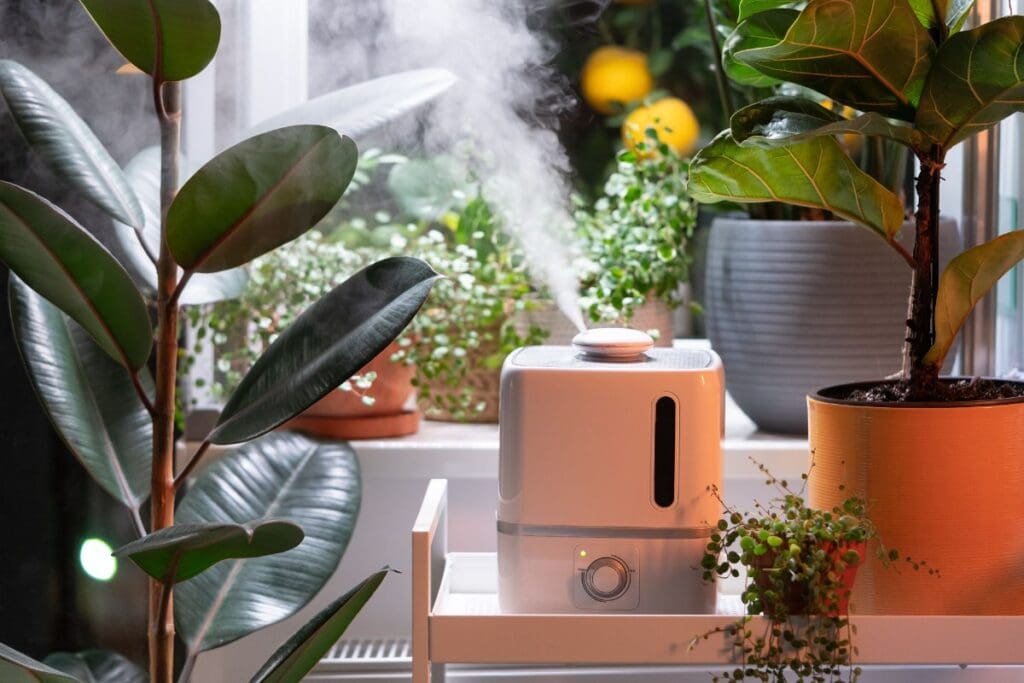
When my plant leaves start to droop in the cold, I check the air in my house first. Dry air is a classic culprit for wilting plants indoors.
Heating during winter just makes the air drier, which isn’t great for most plants. I find a humidifier helps a ton.
I try to keep it close to my plants, but not blasting right at them. This way, the air around the leaves gets a nice boost of moisture.
Most houseplants come from humid places, so extra moisture really keeps them from drying out. I usually let the humidifier run for a few hours each day.
If the leaves perk up, I know it’s working. I also make sure to keep my humidifier clean—no one wants germs spreading around.
I follow the cleaning instructions and change the water often. If I don’t have a humidifier, I’ll sometimes set a tray of water nearby, but honestly, the humidifier is just easier and faster.
A bit more humidity can make a real difference for drooping leaves. It’s the first thing I try when my plants start looking sad in winter.
Even a little extra moisture is better than nothing. I just keep an eye on my plants to see how they respond.
2) Move plants away from cold drafts
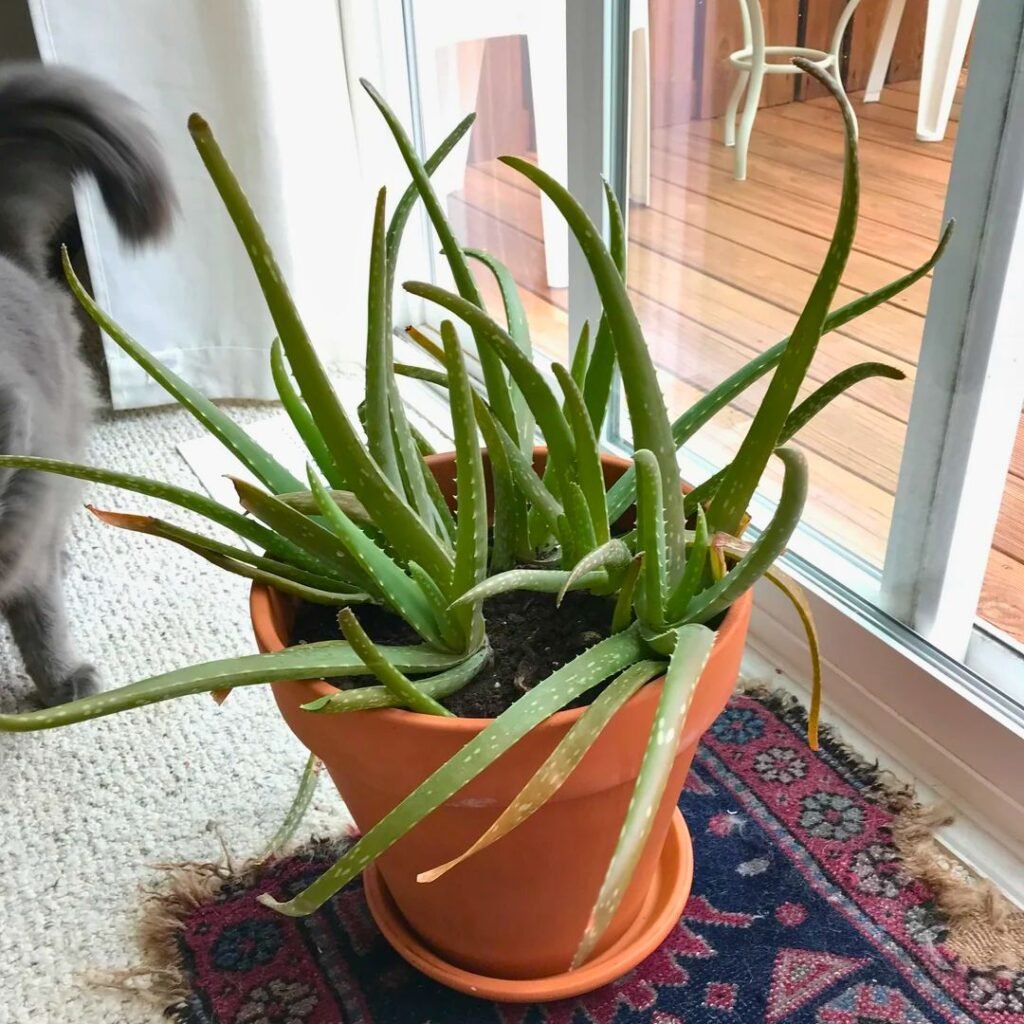
I always check around my windows and doors when it gets chilly. Cold drafts can stress plants and make their leaves droop.
Even tiny leaks can let in enough cold air to mess with my leafy buddies. I like to move my plants away from spots where cold air sneaks in—entryways, open windows, vents, you name it.
Plants really don’t like temperature swings. I watch for chilly wind coming from under doors or through cracks in the window.
Sometimes weatherstripping helps, but honestly, just moving plants a couple of feet makes a difference. In my place, the plants closest to drafts droop more often.
If leaves look sad, I always check if they’re sitting in the path of cold air. Sometimes moving a plant away from a cold wall or window is all it takes.
I also don’t keep my plants too close to heaters or radiators. They want steady temps, not sudden blasts of hot or cold.
If I’ve got plants on a windowsill, I’ll move them to an inside table during especially chilly nights. This quick step has saved more than a few of my plants from cold shocks.
Whenever I make this change, my plants just look happier. Protecting them from drafts is probably the easiest way to help with leaf drooping.
3) Water plants early in the day
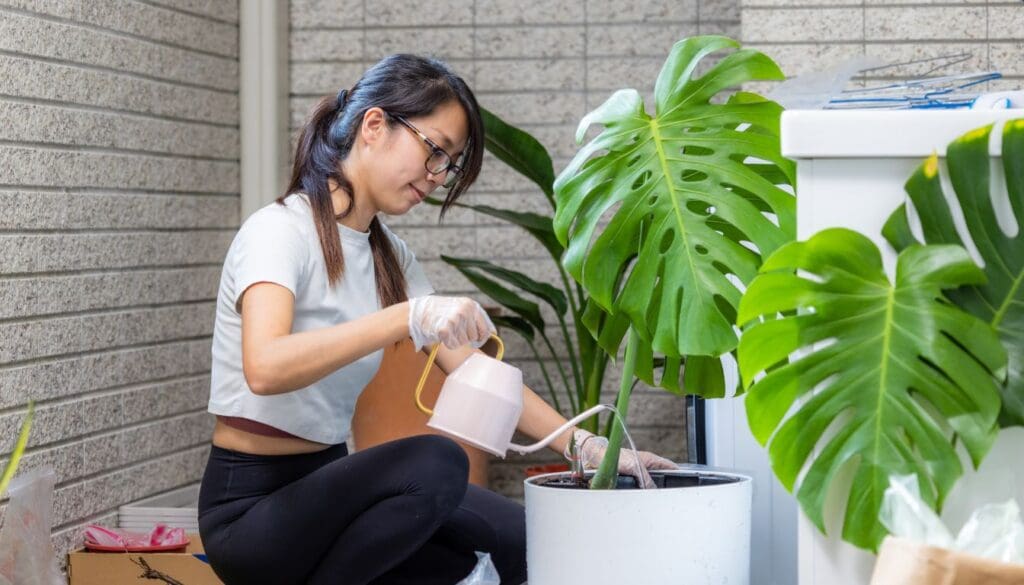
I always try to water my plants in the morning, especially when it’s cold outside. This way, the soil and leaves have time to dry out during the day.
If leaves stay wet at night, they can get moldy or even rot. Watering early lets plants soak up what they need before it cools down in the evening.
The soil won’t stay too wet as the temperature drops, which is important since plants don’t use as much water when it’s cold. Too much moisture can really make leaves droop.
Sunlight helps dry things out faster. By watering early, I let nature do its thing, and my plants just seem healthier.
I’ve noticed fewer droopy leaves and less yellowing when I stick to this routine. My plants always look a bit perkier during the day, too.
If my mornings are a mess, even late morning is better than afternoon. The main thing is giving plants time to dry off before night.
Honestly, this simple change can make a surprising difference for drooping leaves.
4) Use a balanced liquid fertilizer
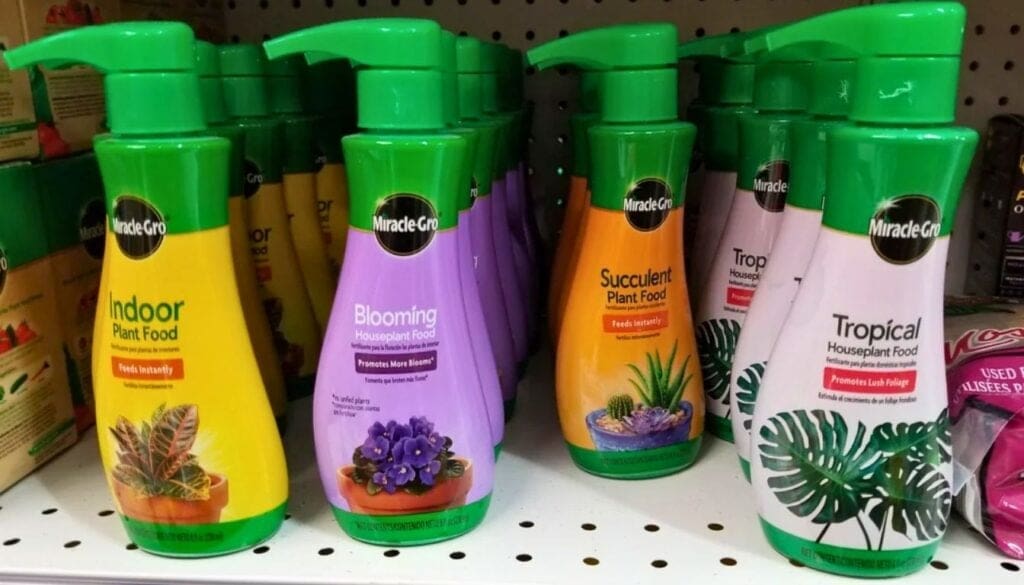
When I see droopy leaves during colder months, I’ll grab a balanced liquid fertilizer—something like Miracle-Gro.
It’s easy to use and gives my plants a quick nutrient boost. I always follow the instructions on the package.
More isn’t better, and too much can actually hurt. I pour the diluted solution into the soil, never on the leaves.
Balanced fertilizers have equal amounts of nitrogen, phosphorus, and potassium. This combo helps plants recover and grow stronger leaves.
If my leaves look pale or sad, it’s usually a sign they need nutrients. I’m careful not to fertilize too often in winter—about once every four to six weeks is plenty for most houseplants.
I stick with liquid fertilizer because the nutrients are available right away. Sometimes droopy leaves perk up in just a few days.
Less is more, especially in the cold months. I always watch my plants after fertilizing, looking for new growth or healthier leaves.
If things get worse, I check for other issues like lighting or overwatering. Giving my plants the right nutrients just helps them handle the cold better.
A balanced liquid fertilizer has honestly saved a few of my plants.
Understanding Why Leaves Droop in Cooler Months

Drooping leaves usually happen when my plants react to temperature changes and less sunlight. Knowing what’s behind it helps me keep my plants happier.
Temperature Sensitivity of Indoor Plants
A lot of indoor plants are from warm places, so they like things cozy and steady. When it gets cold, my plants might droop because the chill slows down their natural processes.
Sudden drafty windows or doors can let in chilly air. That cold air stresses plants and messes with how they take up water.
If the roots get too cold, my plant may stop moving water to the leaves, which makes them droop or even curl.
Most indoor plants like it between 65°F and 75°F (about 18°C to 24°C). When it drops below that, especially at night, the plants start showing signs of stress.
Keeping them away from cold drafts or heating vents really helps.
Impact of Reduced Daylight on Plant Health
Shorter days mean less light for my plants. They use sunlight to make energy through photosynthesis.
In winter, they just don’t get enough, so they might slow down, wilt, or drop leaves. If a plant isn’t getting enough light, it can’t store enough nutrients.
This makes it tough to keep leaves perky and green. If a plant sits too far from a window, or if I forget to open the blinds, it can start wilting after just a few days.
Some houseplants handle low light, but many need bright, indirect sun—even in winter. I’ll move mine closer to windows or use a grow light if I have to.
That way, my plants keep growing strong until the days get longer again.
Long-Term Strategies to Prevent Leaf Drooping
When leaves start drooping in colder months, I focus on two things: keeping the environment steady and watering just right. These two steps help my plants stay healthy and upright, even when it’s freezing outside.
Optimizing Light and Humidity for Seasonal Shifts
I always double-check that my plants get enough light, especially with shorter days. Moving them closer to a window or using grow lights helps a lot.
Dry indoor air just makes drooping worse. I try to keep humidity around 40-60%.
To do this, I’ll mist leaves, set out water trays, or run a humidifier. Grouping plants together makes a little “mini climate” that boosts moisture, too.
I wipe dust off the leaves so they can soak up more light.
Key Steps to Remember:
- Move plants closer to a sunny spot
- Use a humidifier or water trays
- Mist leaves a few times a week
- Wipe dust from leaves regularly
Adjusting Watering Practices for Cold Weather
In winter, plants just don’t need as much water because they’re not growing as fast. I let the top inch of soil dry before watering.
Using room temperature water is important—cold water can shock roots and cause drooping. I also make sure my pots have drainage holes since soggy soil is a classic cause of limp leaves.
Here’s my winter watering checklist:
| Step | Action |
|---|---|
| Check soil moisture | Stick finger one inch deep |
| Use proper water | Let water sit overnight |
| Avoid overwatering | Water less often |
| Watch drainage | Empty saucers after water |
Following this plan helps my plants avoid soggy roots and keeps them perky, even in winter.
Frequently Asked Questions
I see a lot of plants struggling when the temperature drops. Curling, wilting, crinkling—you name it.
Luckily, there are some simple things I do to help my plants bounce back.
What causes indoor plant leaves to curl in colder months?
Colder air just doesn’t hold as much moisture, so the air inside gets dry. When that happens, my plant leaves lose water and curl up to protect themselves.
Drafts from windows and doors can also stress plants and lead to curling.
How can I help my outdoor plants with leaves curling inward due to the cold?
I’ll cover my outdoor plants at night with cloths or covers to keep them warm. If I can, I move potted plants inside or at least to a sheltered spot.
Watering the soil (not the leaves) early in the day helps protect roots before it gets cold.
What steps should I take when I notice my plant’s leaves wilting and curling?
First thing, I check for cold drafts and move the plant away from windows or doors. I water in the morning so the soil isn’t soggy at night.
If the air is dry, I’ll run a humidifier nearby.
Can droopy plant leaves recover after exposure to cold, and how?
Yeah, a lot of leaves bounce back if I act quickly. I move the plant to a warmer spot right away.
I give it a little water and hold off on fertilizer until it looks better. Some leaves won’t heal, but new growth usually comes in healthy.
What are the symptoms of crinkled leaves, and how do I treat them?
Crinkled leaves look wrinkly, dry, or just rough. That’s usually from dry air or not enough water.
I use a balanced liquid fertilizer like Miracle-Gro and add humidity with a humidifier. That usually helps my plant put out fresh, healthy leaves.
How does a high concentration of [substance] result in the curling of leaves?
When there’s just too much of something—say, salt or fertilizer—hanging around in the soil, it can end up pulling water away from your plant’s roots. That’s when you might notice the leaves starting to curl up, which is never a great sign.
I flush the soil with clean water to help wash out the extra chemicals. It’s a simple trick, but it really can make a difference for your plant’s health.
Recommended Garden Supplies
| Product Image | Our Recommended Gardening Supplies | Check Offers! |
|---|---|---|
Top Top
Top
Top
Top
Top
Top
Top
Top | rePotme Houseplant and Tropical Classic Potting Soil Mix | Check Offer On Amazon |
 Top
Top
Top
Top
Top
Top
Top
Top | Espoma Organic Indoor Plant Food | Check Offer On Amazon |
 Top
Top
Top
Top
Top
Top
Top
Top | GooingTop LED Grow Light 6000K Full Spectrum Clip Plant Growing Lamp | Check Offer On Amazon |
 Top
Top
Top
Top
Top
Top
Top
Top | Soil Moisture Meter | Check Offer On Amazon |
 Top
Top
Top
Top
Top
Top
Top
Top | Govee Hygrometer Thermometer, Bluetooth Enabled! | Check Offer On Amazon |
 Top
Top | LEVOIT Humidifiers for Large Room(Best For Plants) | Check Offer On Amazon |
 Top
Top
Top
Top
Top
Top
Top
Top | Upgraded DIY Automatic Drip Irrigation Kit, 15 Potted Houseplants Support | Check Offer On Amazon |
 Top
Top
Top
Top
Top
Top
Top
Top | Stainless Steel Heavy Duty Gardening Tool Set | Check Offer On Amazon |
 Top
Top
Top
Top
Top
Top
Top
Top | Bonide Insecticidal Soap | Check Offer On Amazon |
 Top
Top
Top
Top
Top
Top
Top
Top | Bonide 32 oz Spray Neem Oil for Organic Gardening | Check Offer On Amazon |
 Top
Top
Top
Top
Top
Top
Top
Top | Garden Safe Fungicide | Check Offer On Amazon |

